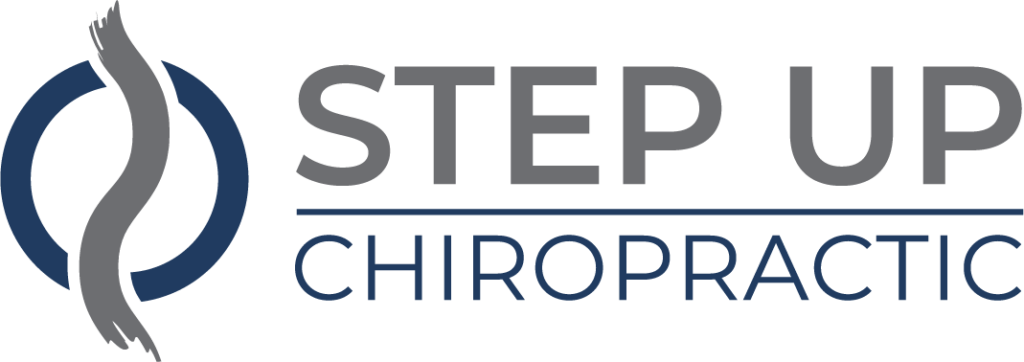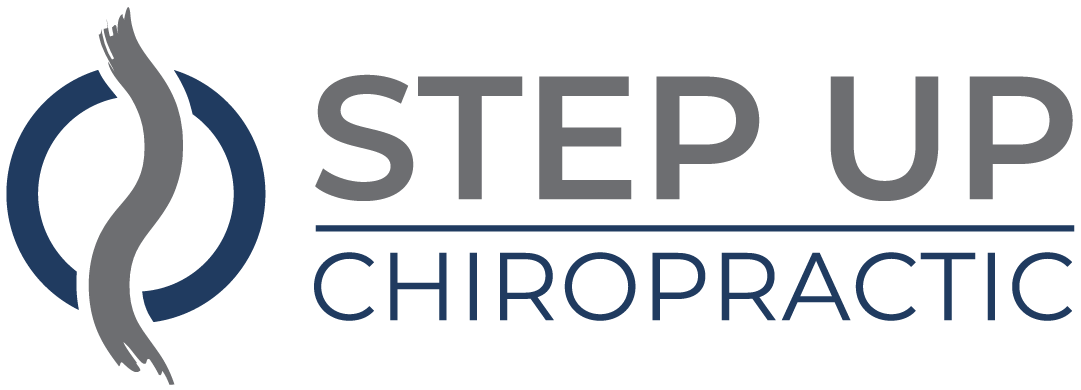If you're dealing with chronic tension headaches, you might find yourself wondering about effective ways to manage the pain. Chiropractic care offers various approaches that target spinal alignment and nervous system health, potentially reducing headache frequency and intensity. Techniques like spinal adjustments and soft tissue therapies can play a significant role in your treatment plan. However, understanding how these methods work together and what personalized strategies can benefit you is essential. Let's explore the nuances of chiropractic care and how it might just make a difference in your life.
Understanding Chronic Tension Headaches
Chronic tension headaches, which often feel like a tight band around your head, can greatly impact your daily life. These headaches can cause discomfort that lingers for hours or even days, making it hard to focus on tasks or enjoy leisure activities. You might notice that stress, fatigue, or poor posture triggers these headaches, leading to a cycle of pain that's tough to break.
Understanding the causes of chronic tension headaches is essential. They often stem from muscle tension in your neck, shoulders, and scalp, resulting from stress or prolonged sitting. If you spend long hours at a desk or hunched over your phone, you may be more susceptible to these headaches.
Emotional factors, like anxiety or depression, can also contribute to the frequency and intensity of your headaches, making it important to address both physical and mental well-being.
Symptoms can vary, but you might experience a dull, aching pain, sensitivity to light, or even difficulty concentrating. Unlike migraines, tension headaches usually don't come with nausea or vomiting, but they can still disrupt your daily routine, leaving you feeling drained and irritable.
While you may find temporary relief through over-the-counter medications, understanding the root causes of your headaches is critical for long-term management. Identifying triggers and making lifestyle changes can help reduce the frequency and severity of your chronic tension headaches, allowing you to reclaim your daily life and enjoy your activities without persistent pain.
Role of Chiropractic Care
When it comes to managing chronic tension headaches, chiropractic care can play a significant role in alleviating pain and improving overall well-being. By addressing the underlying issues that contribute to your headaches, a chiropractor can help restore balance and function to your body.
Chiropractic care focuses on the relationship between your spine and nervous system. Tension in your muscles and misalignments in your spine can lead to nerve irritation and muscle tension, which may trigger headaches. Regular chiropractic visits can help identify and correct these issues, reducing the frequency and intensity of your headaches.
In addition to spinal adjustments, chiropractors often utilize various techniques to support your recovery. They may suggest lifestyle changes, such as improving your posture or incorporating stress-reduction techniques, to help you manage tension more effectively.
They might also recommend exercises to strengthen your neck and shoulder muscles, which can further decrease the likelihood of headaches.
Moreover, chiropractic care emphasizes a patient-centered approach. Your chiropractor will take the time to understand your unique situation and develop a tailored treatment plan that addresses your specific needs.
This personalized attention can foster a sense of empowerment, helping you take control of your health.
Spinal Adjustments Techniques
Spinal adjustment techniques are essential for effectively managing chronic tension headaches. These techniques focus on realigning the spine, which can alleviate pressure on nerves and improve overall function. By addressing misalignments, you can reduce headache frequency and intensity, allowing you to regain control over your daily activities.
When you visit a chiropractor for spinal adjustments, you can expect a variety of techniques tailored to your specific needs. Here are some common approaches:
- Diversified Technique: A widely used method that involves quick, precise thrusts to realign the spine.
- Activator Method: This technique utilizes a small handheld device to deliver a gentle impulse to the spine, promoting alignment without forceful manipulation.
- Gonstead Technique: Focused on specific spinal segments, this method combines thorough analysis and targeted adjustments for the best outcomes.
- Thompson Technique: Involves a specialized table that drops slightly during an adjustment, allowing for a more gentle and effective realignment.
- Flexion-Distraction Technique: This technique uses a specialized table to gently stretch the spine, reducing pressure on discs and nerves.
Soft Tissue Therapy Methods
Soft tissue therapy methods play an essential role in managing chronic tension headaches by addressing muscle tightness and tension that can contribute to head discomfort. These techniques focus on the muscles, tendons, and fascia, providing relief and improving overall function. You might find that incorporating soft tissue therapy into your routine can greatly enhance your quality of life.
One common method is myofascial release, which targets the connective tissue surrounding your muscles. By applying gentle sustained pressure, this technique helps release restrictions and improve blood flow. You may notice a reduction in muscle tightness and an increase in range of motion after a session.
Another effective approach is trigger point therapy. This method involves identifying and applying pressure to specific points in tight muscles that can refer pain to other areas, including your head. By releasing these trigger points, you can alleviate headache pain and restore normal muscle function.
Sports massage is also beneficial, as it helps relieve tension and improve circulation. This technique can be tailored to your needs, focusing on areas that are particularly tight or sore. Regular sessions may not only help with headaches but also enhance your overall physical performance.
Finally, stretching and strengthening exercises can complement soft tissue therapies. These can help maintain muscle balance and prevent future tension buildup. By combining these methods, you can take proactive steps toward managing your chronic tension headaches effectively.
Lifestyle and Ergonomic Recommendations
To manage chronic tension headaches, it's crucial to focus on your lifestyle and ergonomics.
Simple posture correction techniques, proper workspace setup, and effective stress management strategies can make a significant difference.
Posture Correction Techniques
Your posture plays an essential role in managing chronic tension headaches, and making a few adjustments can lead to considerable relief. By focusing on your alignment throughout daily activities, you can reduce the strain on your neck and shoulders, ultimately alleviating headache triggers.
Here are some effective posture correction techniques to reflect upon:
- Sit up straight: Keep your back straight, shoulders back, and feet flat on the floor when sitting.
- Align your head: Position your ears over your shoulders to prevent forward head posture, which strains neck muscles.
- Use supportive furniture: Invest in a chair that provides proper lumbar support to encourage an ergonomic position.
- Take breaks: Regularly stand up, stretch, and move around to prevent stiffness and promote circulation.
- Strengthen core muscles: Engage in exercises that build your core strength, as a strong core supports better posture.
Incorporating these techniques into your daily routine can considerably improve your posture, helping to ease chronic tension headaches.
Workspace Ergonomics
Creating an ergonomic workspace is vital for preventing chronic tension headaches and enhancing overall comfort during long hours of work. Start by adjusting your chair to support your lower back, keeping your feet flat on the ground. Your knees should be at or slightly below hip level.
Make sure your desk height allows your elbows to rest comfortably at a 90-degree angle. Position your computer monitor about an arm's length away, with the top of the screen at or slightly below eye level. This helps reduce neck strain. If you use a laptop, consider a stand or an external monitor to achieve the right height.
Use a separate keyboard and mouse to maintain proper wrist alignment. Lighting plays an important role, too. Avoid glare on your screen by positioning it away from windows and using task lighting as needed.
Take regular breaks; every hour, stand, stretch, or walk around for a few minutes. This not only helps with blood circulation but also alleviates muscle tension. By implementing these ergonomic adjustments, you'll create a workspace that minimizes discomfort and promotes better overall health, reducing the likelihood of chronic tension headaches.
Stress Management Strategies
Alongside a well-structured workspace, managing stress plays a crucial role in preventing chronic tension headaches. By adopting effective stress management strategies, you can reduce the frequency and intensity of headaches.
Here are some practical tips to help you:
- Practice mindfulness: Take a few minutes daily to focus on your breathing or meditate. This can help center your thoughts and reduce stress.
- Stay active: Regular physical activity releases endorphins, which can elevate your mood and decrease stress levels.
- Prioritize sleep: Aim for 7-9 hours of quality sleep each night. A well-rested mind is better equipped to handle stress.
- Stay hydrated: Dehydration can increase headache risk. Drink plenty of water throughout the day to keep your body functioning efficiently.
- Set boundaries: Learn to say no when you feel overwhelmed. Prioritizing your time helps manage stress levels effectively.
Implementing these strategies into your routine can create a healthier lifestyle and greatly reduce the impact of stress on your body.
Patient Case Studies
Now, let's look at some patient case studies that highlight treatment outcomes for chronic tension headaches.
You'll see how individualized care strategies can lead to effective relief and improved quality of life.
These real-world examples will illustrate the value of tailored chiropractic approaches.
Treatment Outcomes Overview
Patient case studies reveal valuable insights into the effectiveness of chiropractic care for chronic tension headaches. Many patients experience considerable relief and improvement in their quality of life after receiving chiropractic treatment.
By examining various individual journeys, you can better understand how chiropractic care addresses this common issue.
Here are some key treatment outcomes observed in these case studies:
- Reduced headache frequency: Many patients report fewer headaches per month after starting chiropractic adjustments.
- Decreased intensity: Patients often note that the severity of their tension headaches diminishes considerably.
- Improved range of motion: Chiropractic care can enhance neck and shoulder mobility, which is essential for tension relief.
- Enhanced overall well-being: Patients frequently mention better sleep and lower stress levels after treatment.
- Long-term relief: Some individuals experience sustained improvement, even after completing their chiropractic care plan.
These outcomes highlight the potential benefits of chiropractic intervention for chronic tension headache sufferers.
Individualized Care Strategies
Chiropractic care isn't a one-size-fits-all solution; it requires a tailored approach to address individual needs effectively. When you visit a chiropractor for chronic tension headaches, they'll start by gathering detailed information about your specific symptoms, lifestyle, and medical history. This personalized assessment helps them develop an individualized care strategy.
For instance, one patient might find relief through a combination of spinal adjustments and soft tissue therapy, focusing on the neck and upper back areas. Another patient may benefit from lifestyle modifications, including ergonomic adjustments at work and stress management techniques, along with regular chiropractic sessions.
Your chiropractor may even incorporate modalities like heat therapy or specific exercises designed to strengthen the muscles that support your spine.
Case studies show that people who engage in a collaborative care plan, where they actively participate in their treatment, often experience better outcomes.
Ultimately, your journey toward relief from chronic tension headaches is unique. By working closely with your chiropractor and sticking to your personalized care strategy, you're setting yourself up for a more effective recovery and improved quality of life.
Choosing the Right Chiropractor
Selecting the right chiropractor can make all the difference in managing chronic tension headaches. With so many options available, it's crucial to find someone who understands your unique needs and can tailor their approach accordingly. Here are some key factors to keep in mind when making your choice:
- Credentials and Experience: Look for a chiropractor who's licensed and has experience treating headaches specifically. Check their educational background and any ongoing training in headache management.
- Treatment Techniques: Different chiropractors may use various techniques. Some might focus on spinal adjustments, while others may incorporate additional therapies like massage or acupuncture. Confirm their methods align with what you're comfortable with.
- Communication Style: You'll want a chiropractor who listens to your concerns and explains their treatment plan clearly. A good rapport can enhance your comfort and treatment outcomes.
- Patient Reviews: Research what other patients say about their experiences. Online reviews and testimonials can provide insights into the chiropractor's effectiveness and professionalism.
- Convenience: Reflect on the location and office hours. You'll want a chiropractor whose practice is accessible and fits your schedule, making it easier to stick to your treatment plan.
Taking the time to evaluate these factors can lead you to a chiropractor who'll help you effectively manage your chronic tension headaches.
Conclusion
In summary, if you're struggling with chronic tension headaches, chiropractic care could be a game changer for you. By addressing spinal misalignments and incorporating soft tissue therapies, you can find relief and improve your overall well-being. Remember to reflect on lifestyle changes and ergonomic adjustments to further support your healing journey. So, don't hesitate to seek out a qualified chiropractor who can tailor a treatment plan that fits your needs and helps you regain a pain-free life.




